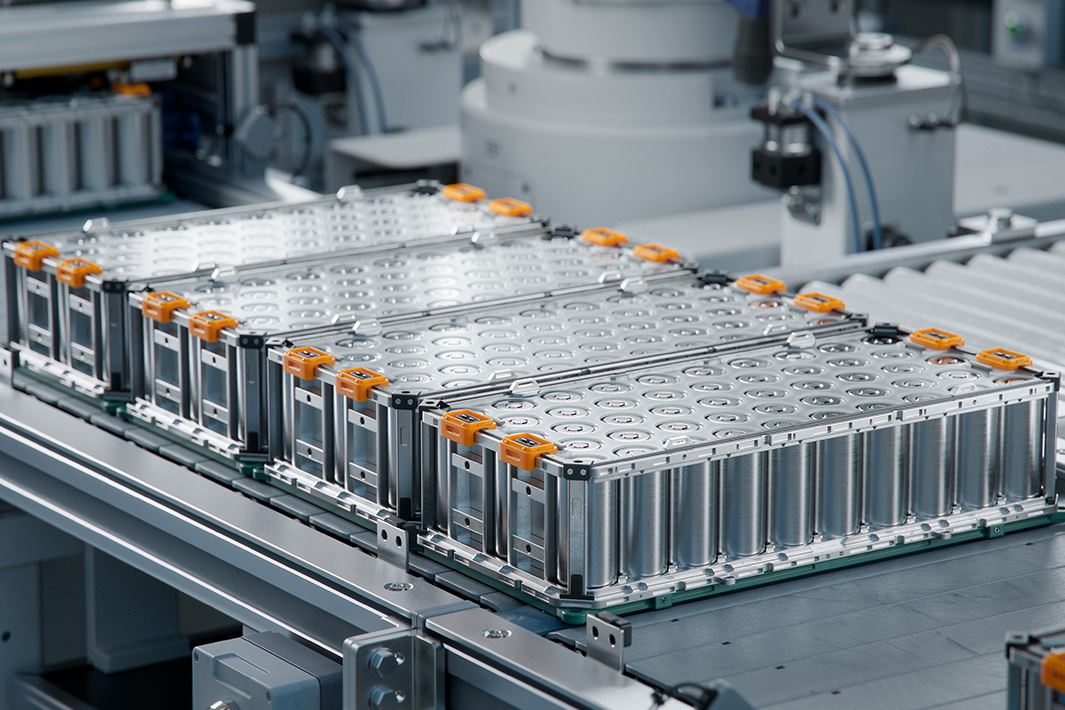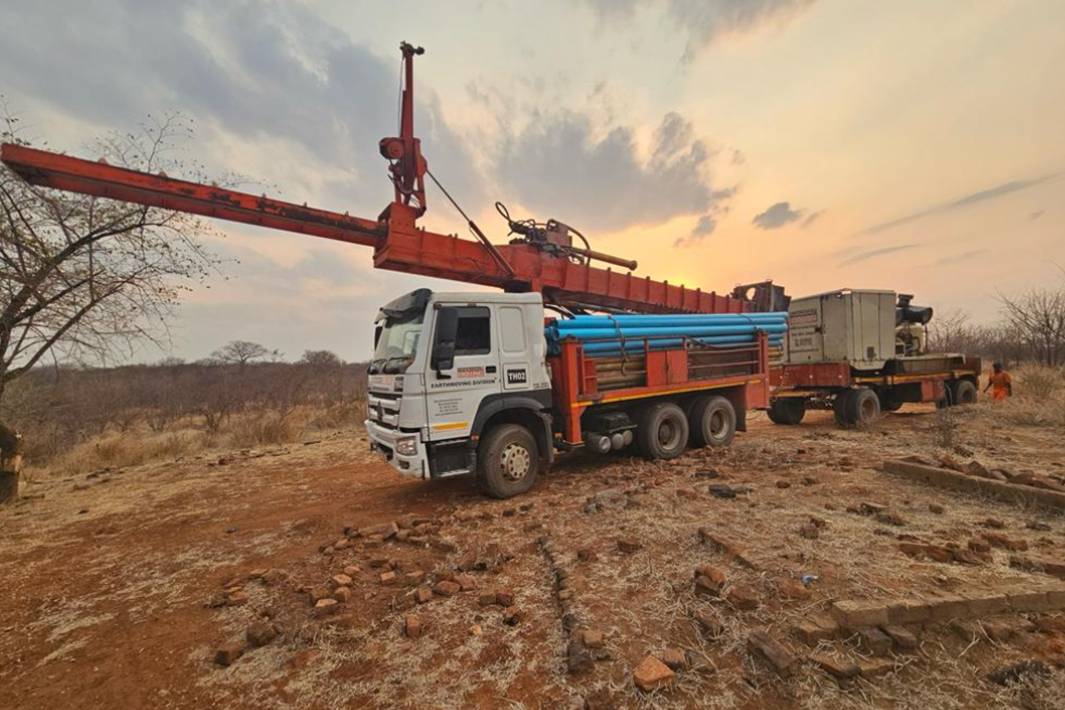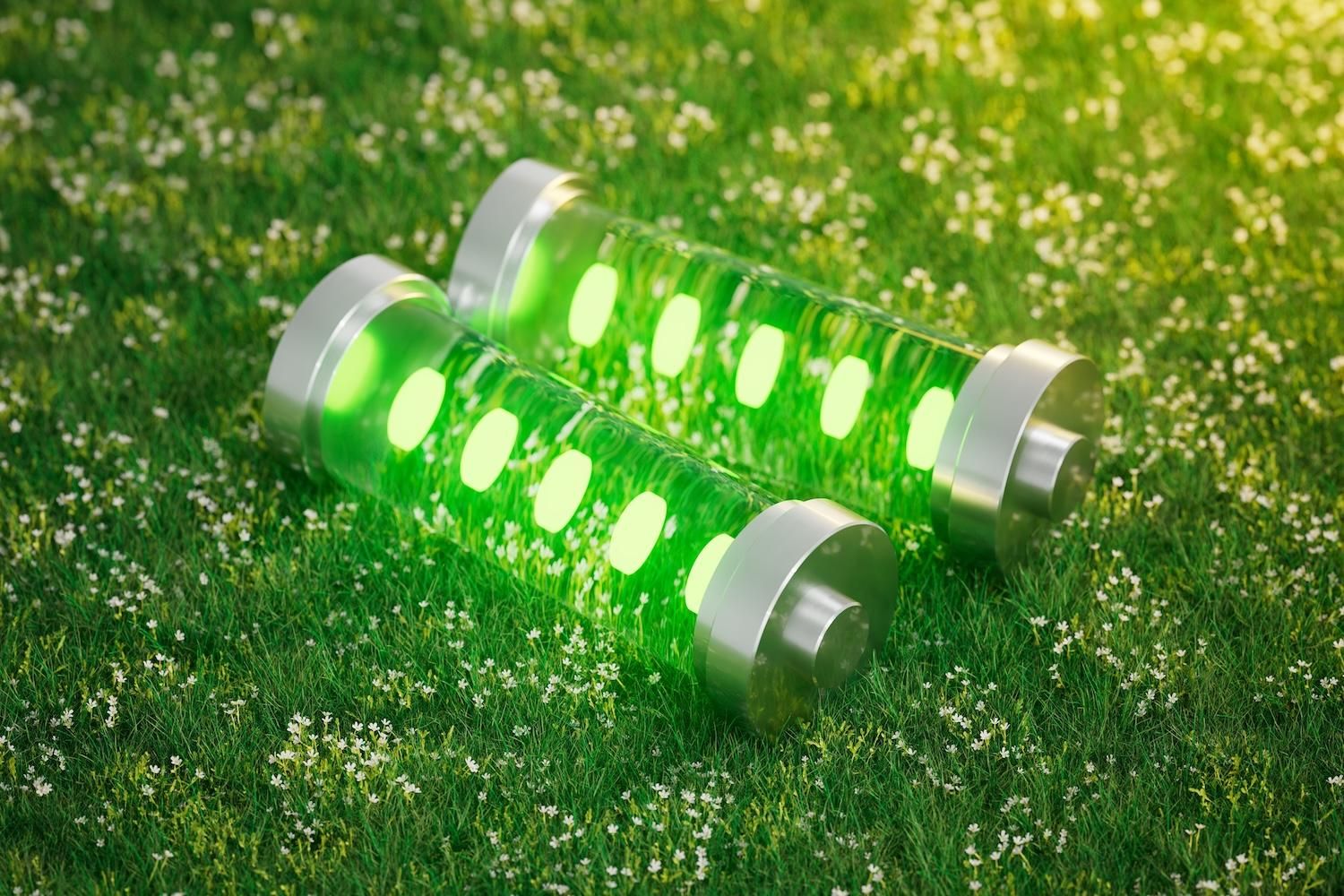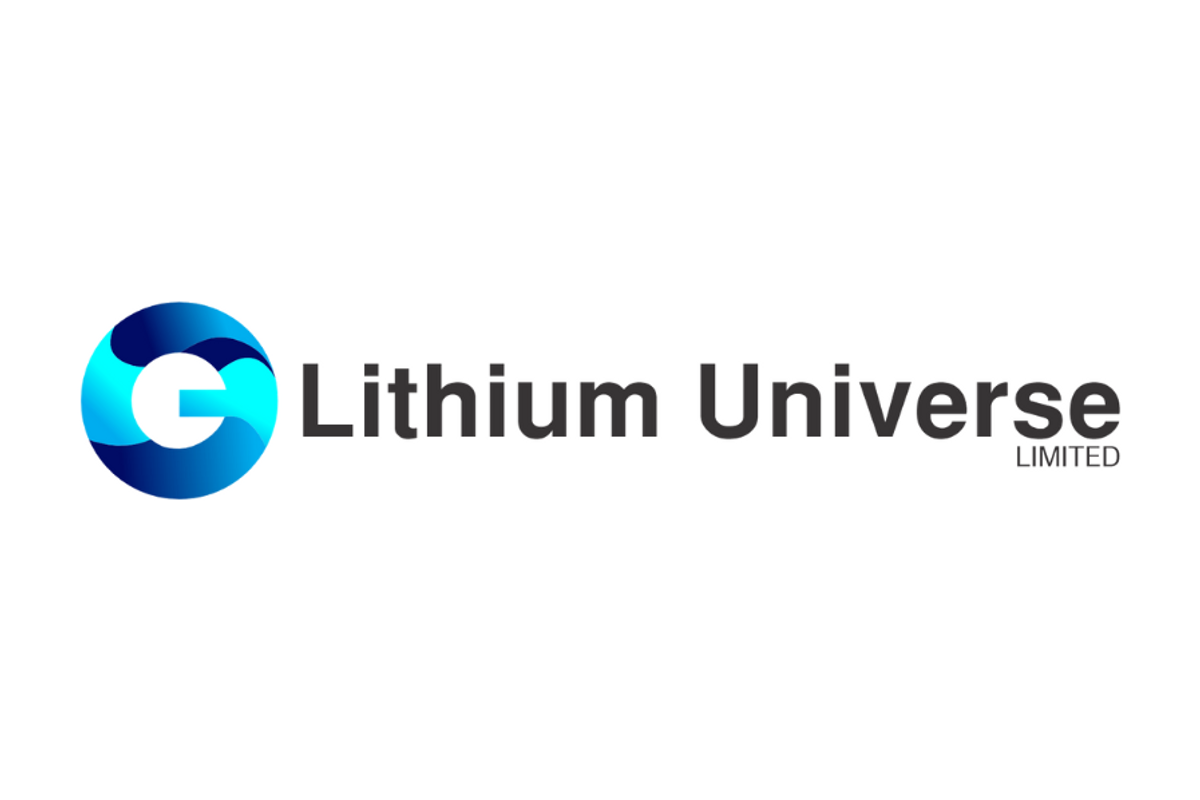
April 08, 2024
Lithium Universe Limited (referred to as "Lithium Universe" or the "Company," ASX: "LU7") provides a strategic update on addressing the gap in lithium conversion capacity and enhancing the North American supply chain.
Highlights
- Lithium Universe to play pivotal role in closing the lithium conversion gap
- Lithium Universe to convert supply in North America.
- Target conversion contracts with OEMs who have spodumene off take
- Target "take or pay" agreements with OEMs to reduce market/price risks
- Geopolitical shift to onshore the battery supply chain in North America
- Canada emerges as next key global lithium supply chain
- LFP batteries expected to capture 87% of the ESS market share by 2033
- Strong Federal and Provincial government financing support within the industry
- Lithium Universe committed to building through the lithium cycle
What is the ‘Lithium Gap’?
North America anticipates a surge in battery manufacturing, with over 20 major manufacturers planning to deploy an estimated 1,000GW of battery capacity. Canada has ascended to the top spot in BloombergNEF's Global Lithium-Ion Battery Supply Chain Ranking, signalling its emergence as a significant global supplier of battery materials. However, bridging the gap between the growing supply of lithium ore and the increasing demand for highly processed lithium carbonate remains a challenge and opportunity.
Lithium Universe is advancing a mine-to-battery-grade lithium carbonate strategy in Canada through the Québec Lithium Processing Hub (QLPH). The QLPH includes a multi-purpose independent 1 Mtpa concentrator and an independent 16,000 tpa battery-grade lithium carbonate refinery.
Over the past decade, numerous lithium conversion plants worldwide have encountered technical and startup challenges. Even established lithium producers have found lithium conversion to be a challenging task. Lithium Universe presents a solution to mitigate these risks. The company has formed a team, dubbed the Lithium Dream Team, comprising experts in hard rock lithium extraction and downstream conversion operations. Additionally, strategic partnerships with engineering consultants Hatch Ltd and Primero Group have been forged. By leveraging proven technology in spodumene concentration and lithium conversion design, the company aims to minimize execution risk. Notably, the Dream Team previously spearheaded the successful construction of the Jiangsu Lithium Carbonate facility, surpassing design expectations to produce the world's premier battery-grade carbonate. This project was built by Hatch Ltd. Lithium Universe intends to replicate the design and operational methodologies implemented at Jiangsu, viewing this, coupled with the expertise of the Dream Team, as pivotal in establishing conversion capacity in North America.
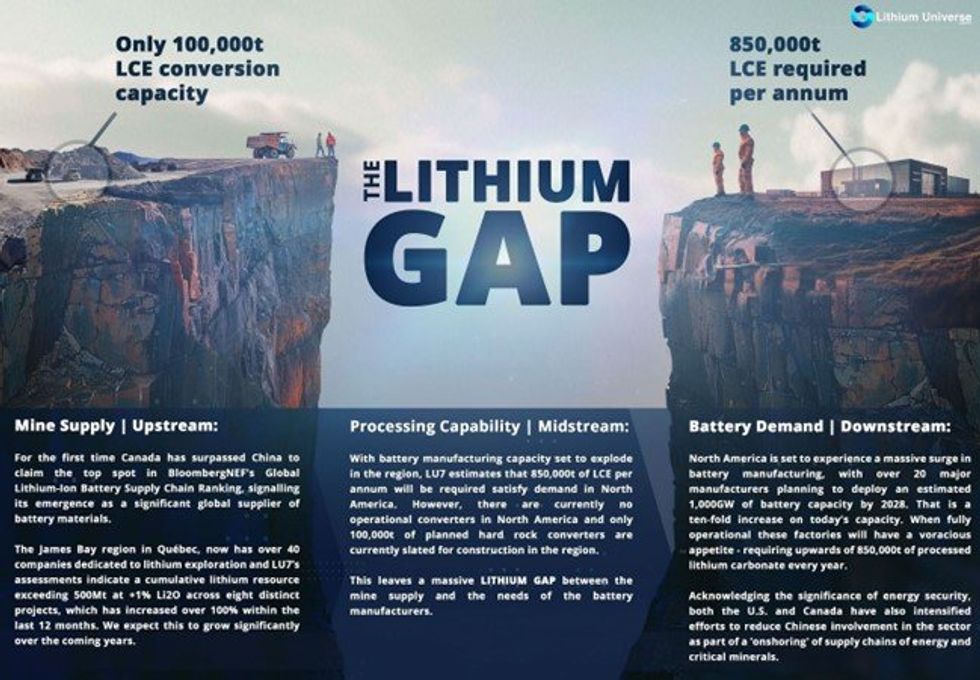
The Emerging James Bay Supply
The Company has engaged with numerous exploration entities operating within the region of James Bay, Québec and estimate there are over 40 companies dedicated to lithium exploration in the area. Our assessments indicate a cumulative lithium resource exceeding 500Mt at +1% Li2O across eight distinct projects, which has increased over 100% within the last 12 months. This significant increase is due to the upgraded resource of 110.2Mt at 1.3% Li2O by Arcadium Lithium at the James Bay Project, the maiden resource of Patriot Battery Metals at Corvette of 109Mt at 1.42% Li2O and most recently the announcement of Winsome Resource’s 59Mt at 1.12% Li2O resource at their Adina Project.
This article includes content from Lithium Universe Limited, licensed for the purpose of publishing on Investing News Australia. This article does not constitute financial product advice. It is your responsibility to perform proper due diligence before acting upon any information provided here. Please refer to our full disclaimer here.
LU7:AU
The Conversation (0)
03 September
Macquarie Electro Jet Silver Extraction Recovery
Lithium Universe (LU7:AU) has announced Macquarie Electro Jet Silver Extraction RecoveryDownload the PDF here. Keep Reading...
12 August
Acquisition of Silver Extraction Technology
Lithium Universe (LU7:AU) has announced Acquisition of Silver Extraction TechnologyDownload the PDF here. Keep Reading...
30 July
Quarterly Activities/Appendix 5B Cash Flow Report
Lithium Universe (LU7:AU) has announced Quarterly Activities/Appendix 5B Cash Flow ReportDownload the PDF here. Keep Reading...
30 July
Lithium Universe Ltd Quarterly Activities Report
Melbourne, Australia (ABN Newswire) - During the June quarter, Lithium Universe Ltd (ASX:LU7,OTC:LUVSF) (FRA:KU00) (OTCMKTS:LUVSF) announced the acquisition of the global rights to commercially exploit a patented photovoltaic solar panel recycling technology known as "Microwave Joule Heating... Keep Reading...
17 July
Completion of PV Solar Cell Recycling Acquisition
Lithium Universe (LU7:AU) has announced Completion of PV Solar Cell Recycling AcquisitionDownload the PDF here. Keep Reading...
11 December
Mining the Gap: 5 Forces Shaping North America’s Lithium Supply Chain
A convergence of industry investments, government initiatives and a shifting global trade dynamic is creating an environment ripe for the development of a North American battery supply chain, with lithium playing a leading role. These trends are reshaping the region’s industrial base and opening... Keep Reading...
10 December
Rock Bottom: Strategic Window for Ground-level Lithium Investment
When lithium prices hit bottom, savvy investors know that’s exactly where the next big discovery begins — literally. Beneath the surface of global markets and remote exploration grounds, new opportunities are forming in the wake of a sharp price reset and renewed geopolitical urgency.Recent... Keep Reading...
10 December
Liontown Resources Pens Lithium Offtake Agreement with China's Canmax
Liontown Resources (ASX:LTR,OTC Pink:LINRF) has executed a binding offtake agreement with Chinese conglomerate Canmax Technologies (SZSE:300390) as part of its strategy to diversify its customer base.“Listed on the Shenzhen Stock Exchange, Canmax is one of the world’s leading manufacturers of... Keep Reading...
08 December
Trading Halt
Jindalee Lithium (JLL:AU) has announced Trading HaltDownload the PDF here. Keep Reading...
05 December
Livium Receives A$663k in RsD Tax Incentive Rebates for VSPC
Livium Ltd (ASX: LIT) (“Livium” or the “Company”) advises that it has received A$663,000 in research and development ("R&D") tax incentive rebates from the Australian Tax Office for the 2025 financial year ("FY25"), relating to its wholly owned subsidiary VSPC Pty Limited ("VSPC"). The rebate... Keep Reading...
01 December
Why SQM Says Social Dialogue is Key to Sustainable Lithium
As scrutiny continues to intensify across the battery metals supply chain, the conversation around sustainability has moved far beyond carbon footprints. At this year’s Benchmark Week, Stefan Debruyne, director of external affairs at Sociedad Quimica y Minera de Chile (SQM) (NYSE:SQM), made that... Keep Reading...
Latest News
Latest Press Releases
Related News
TOP STOCKS
American Battery4.030.24
Aion Therapeutic0.10-0.01
Cybin Corp2.140.00

